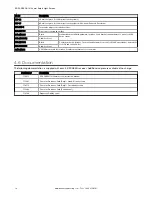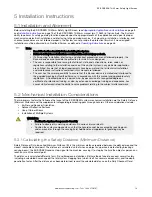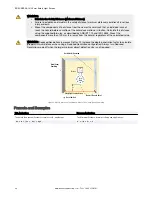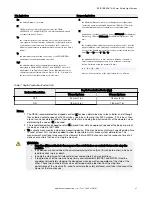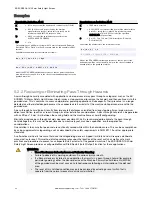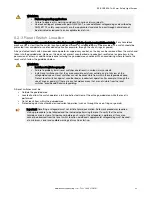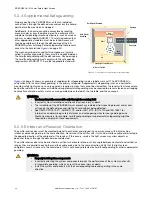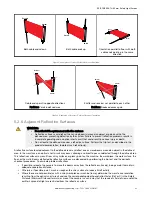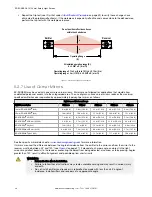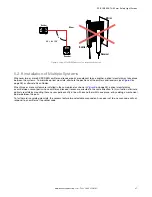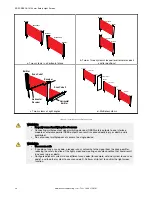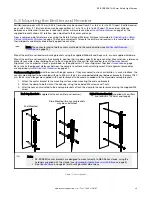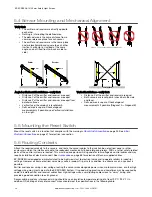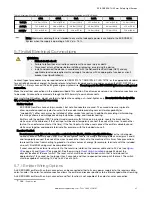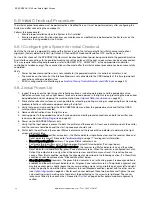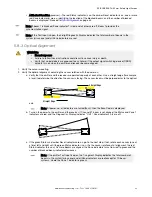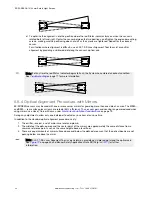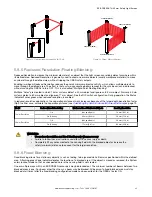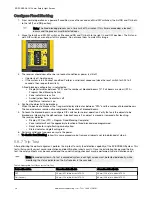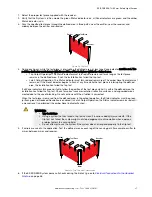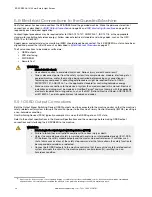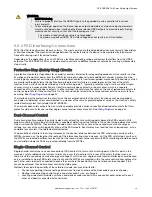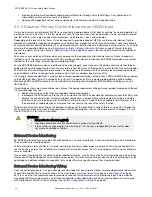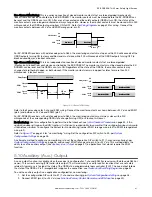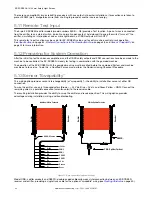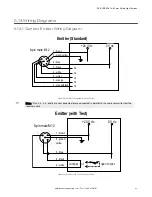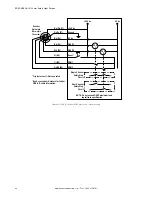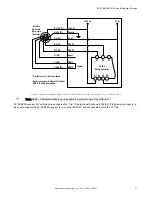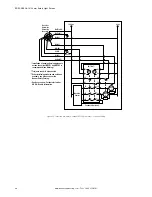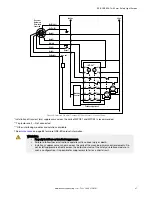
5.8 Initial Checkout Procedure
The initial checkout procedure must be performed by a Qualified Person. It must be performed only after configuring the
System and after connecting the components.
Perform this procedure to:
• Ensure proper installation when the System is first installed
• Ensure proper System function whenever any maintenance or modification is performed on the System or on the
machinery that is guarded by the System.
5.8.1 Configuring the System for Initial Checkout
Verify the Test input is jumpered (if used) and the System is set to the factory defaults for initial checkout and optical
alignment. (Factory defaults are for Trip Output, 2-Channel EDM, Reduced Resolution OFF, and Scan Code 1.)
For the initial checkout, the EZ-SCREEN System must be checked without power being available to the guarded machine.
Final interface connections to the guarded machine cannot take place until the light screen system has been checked out.
This may require lockout/tagout procedures (refer to OSHA1910.147, ANSI Z244-1, or the appropriate standard for
controlling hazardous energy). These connections will be made after the initial checkout procedure has been successfully
completed.
Verify:
• Power has been removed from (or is not available to) the guarded machine, its controls or actuators; and
• The machine control circuit or the Interface Module is not connected to the OSSD outputs at this time (permanent
connections will be made later); and
• EDM is configured for No Monitoring (see
Machine Primary Control Elements and EDM Input
5.8.2 Initial Power-Up
1. Inspect the area near the light screen for reflective surfaces, including work pieces and the guarded machine.
Reflective surfaces may cause light beams to reflect around a person in the light screen, preventing the person from
being detected and not stopping the machine motion (see
2. Eliminate the reflective surfaces as much possible by relocating, painting, masking, or roughening them. Remaining
problem reflections will become apparent during the trip test.
3. Verify that power is removed from the EZ-SCREEN System and from the guarded machine and that the OSSD
safety outputs are not connected.
4. Remove all obstructions from the light screen.
5. Leaving power to the guarded machine off, make power and earth ground connections on both the emitter and
6. Power up the EZ-SCREEN System only.
7. Verify that the input power is present to both the emitter and the receiver. At least one indicator on both the emitter
and the receiver should be on and the start-up sequence should cycle.
8. Watch both the emitter and the receiver Status indicators and the receiver Zone indicators to determine the light
screen alignment status.
• Lockout Condition (emitter or receiver)—the Status indicator single-flashes red, and the receiver Zone and
Reset indicators are off. Proceed to
on page 77 for diagnostic information.
• Normal Operating Mode (emitter)—The green Status indicator is on.
• Test mode (5-pin emitters only): A flashing green System Status indicator (Test input open).
• Receiver Latch Condition, all optical beams clear—the receiver red Status indicator is on and the amber
Reset indicator is double-flashing; green Zone indicators are on. When the receiver is configured for Latch
Output, the outputs are on only when all beams are clear and after a manual reset. If a reset routine can
cause a Clear (Run) condition, optimize the alignment as described in the following section. If a Clear (Run)
condition cannot be achieved, see “Blocked condition” below.
• Clear (Run) Condition (receiver)—The green Status indicator is on (or flashing green if reduced resolution is
enabled), and the amber Reset indicator is on. All green Zone indicators are on. To optimize alignment and
maximize excess gain, slightly loosen the sensor mounting screws (x4) and rotate one sensor left and right,
noting the positions where the Status indicators turn red (Blocked condition); repeat with the other sensor
(see
on page 33). Center each sensor between those two positions and tighten the end
cap mounting screws, making sure to maintain the positioning as the screws are tightened. The sensor
lenses must directly face each other. Proceed to
on page 36 after optimum optical alignment is
verified.
EZ-SCREEN
®
14/30 mm Safety Light Screen
32
www.bannerengineering.com - Tel: + 1 888 373 6767

